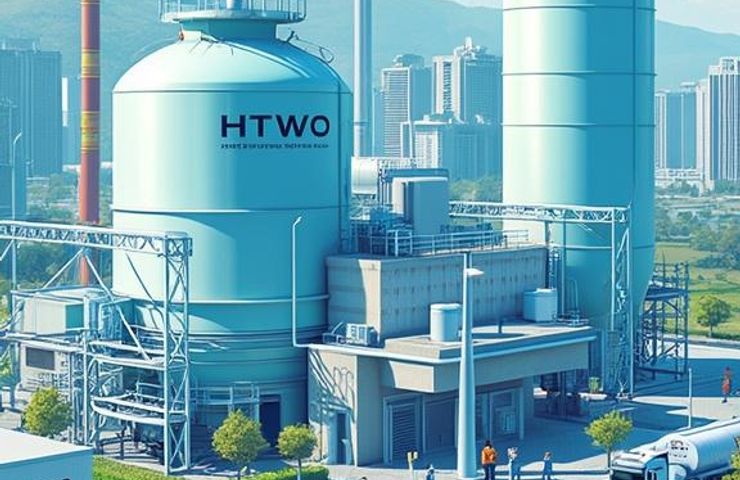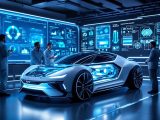
Hyundai Hydrogen Ecosystem: Powering the Full Hydrogen Value Chain with HTWO
August 27, 2025Hyundai Motor Group is doubling down on its drive to reshape the Hyundai hydrogen ecosystem. With Ken Ramirez—the new Executive Vice President and head of the Energy and Hydrogen Business Division—leading the charge, they’re taking things way beyond just fuel cell cars and trucks. Get this: under Ramirez, who arrived from Renault-Nissan, Hyundai isn’t just selling vehicles anymore. They’ve built an all-in-one hydrogen universe—production, storage, transport, distribution, you name it—under their HTWO platform. They even showed off this fully integrated model at both ACT Expo in California and the World Hydrogen Summit 2025. In a nutshell, Hyundai’s gone from automaker to orchestrator of a full-blown hydrogen economy, weaving together R&D, capital, and partners into a scalable, global play.
Historical Context: A Legacy of Innovation
Since its founding in 1967, Hyundai Motor Group built its name on mass-market cars and heavy machinery. Fast forward to the early 2000s, when curious R&D crews dipped their toes into hydrogen. That early work led to passenger fuel cell vehicles like the NEXO, which quickly set high bars for reliability, and the commercial XCIENT heavy-duty truck. Pilot projects even tested high-pressure refueling, paving the way for government-backed hydrogen incentives—especially in South Korea. Those first steps of making and moving hydrogen laid the groundwork for today’s fully integrated hydrogen value chain, where manufacturing, engineering, and supply logistics all tie together.
How Hydrogen Fuel Cells Work: Clean Power on Demand
At the core of this real-world breakthrough is the humble hydrogen fuel cell—a neat little gadget that turns hydrogen and oxygen into electricity, with only water and heat as byproducts. Here’s the skinny: hydrogen molecules split at the anode, freeing up protons and electrons. The protons slip through a membrane while the electrons do the heavy lifting—powering motors or generators—before they all reunite with oxygen at the cathode. What you get is on-demand, zero-emission power. From passenger cars to heavy trucks, marine vessels to remote generators, fuel cells can balance grids, back up critical infrastructure, and kick CO₂ and particulates to the curb.
HTWO: Secret Sauce for a Seamless Ecosystem
The HTWO platform is Hyundai’s open-door blueprint for hydrogen success. It pulls together internal units like Hyundai E&C with energy majors, infrastructure specialists, and tech firms, covering everything from green hydrogen production and high-pressure storage to pipeline logistics, truck transport, and public refueling stations. They’re even exploring Waste-to-Hydrogen (W2H) tech to turn trash into fuel, slashing feedstock costs. By inviting co-investors and sharing roadmaps, HTWO aims to make hydrogen as easy to use as diesel—speeding up global market readiness for robust hydrogen infrastructure.
Advanced Driver Assistance Systems: The AI Edge
Hyundai’s fuel cell trucks aren’t just clean—they’re smart. Built-in ADAS tech—radar, LiDAR, cameras, and predictive analytics—offers everything from lane-keeping and adaptive cruise to collision alerts and telematics integration. This AI-driven toolkit cuts downtime, slashes maintenance bills, and boosts driver confidence—key for fleets comparing hydrogen to electric or diesel options.
Global Footprint: South Korea, USA & Indonesia
Hyundai’s rolling out hydrogen plants and refueling networks across South Korea, home to 52 million people and major industrial hubs like Ulsan and Yeouido, all thanks to government roadmaps. Over in Georgia, USA, their October 2024 facility churns out both electric and hydrogen vehicles, turning the state into a logistics and innovation hot spot. At ACT Expo in Anaheim, California, they spotlight both XCIENT heavy-duty trucks and the HTWO ecosystem in action. Meanwhile, in Indonesia, strategic partnerships are setting the stage for new hydrogen production sites and export routes—tapping into Southeast Asia’s growing thirst for clean fuels.
Engineering the Future with Hyundai E&C
Hyundai Engineering & Construction is the linchpin of the H-Road initiative, linking green hydrogen facilities to nuclear plants and eyeing small modular reactors (SMRs) for co-generation. By feeding large electrolyzers with stable, low-carbon power, they promise steady hydrogen output. Add investments in lithium for battery synergies, and you’ve got cross-division collaboration on full display. H-Road cements Hyundai E&C’s role in next-gen energy infrastructure, including pilot projects with national utilities.
Collateral Impacts: Jobs, Standards & Transformation
This hydrogen push isn’t just about cleaner transport—it’s spawning new jobs in engineering, construction, maintenance, and R&D. University partnerships are sprouting catalysts and tech labs, while port authorities, tram networks, and maritime fleets get clear guidelines through evolving ISO frameworks. By swapping out fossil fuels in heavy logistics and industrial power, Hyundai is fueling a wider shift toward net-zero targets and proving that hydrogen can scale across industries.
Challenges, Solutions & The Road Ahead
Let’s be real: scaling up hydrogen isn’t a walk in the park. Electrolyzer costs are still steep, refueling stations need to multiply, and feedstock availability can swing. Energy price swings add extra headaches, and aligning international rules is an ongoing puzzle. Hyundai’s tackling these hurdles head-on—partnering with energy giants, kicking off W2H pilots, and fine-tuning ADAS for peak efficiency. Their open HTWO platform attracts investors and tech collaborators, while the H-Road initiative taps nuclear to steady supply. These proof points and emerging standards are paving the way for wider adoption of the hydrogen value chain.
Bottom line: Hyundai Motor Group has flipped the script on hydrogen—transforming from a mobility player into a vertically integrated, global hydrogen powerhouse. With the HTWO platform at its core, Hyundai is setting the pace for the energy transition. As demand for clean energy ramps up, their all-in-one approach may well become the blueprint for industry-wide adoption.



 With over 15 years of reporting hydrogen news, we are your premier source for the latest updates and insights in hydrogen and renewable energy.
With over 15 years of reporting hydrogen news, we are your premier source for the latest updates and insights in hydrogen and renewable energy.